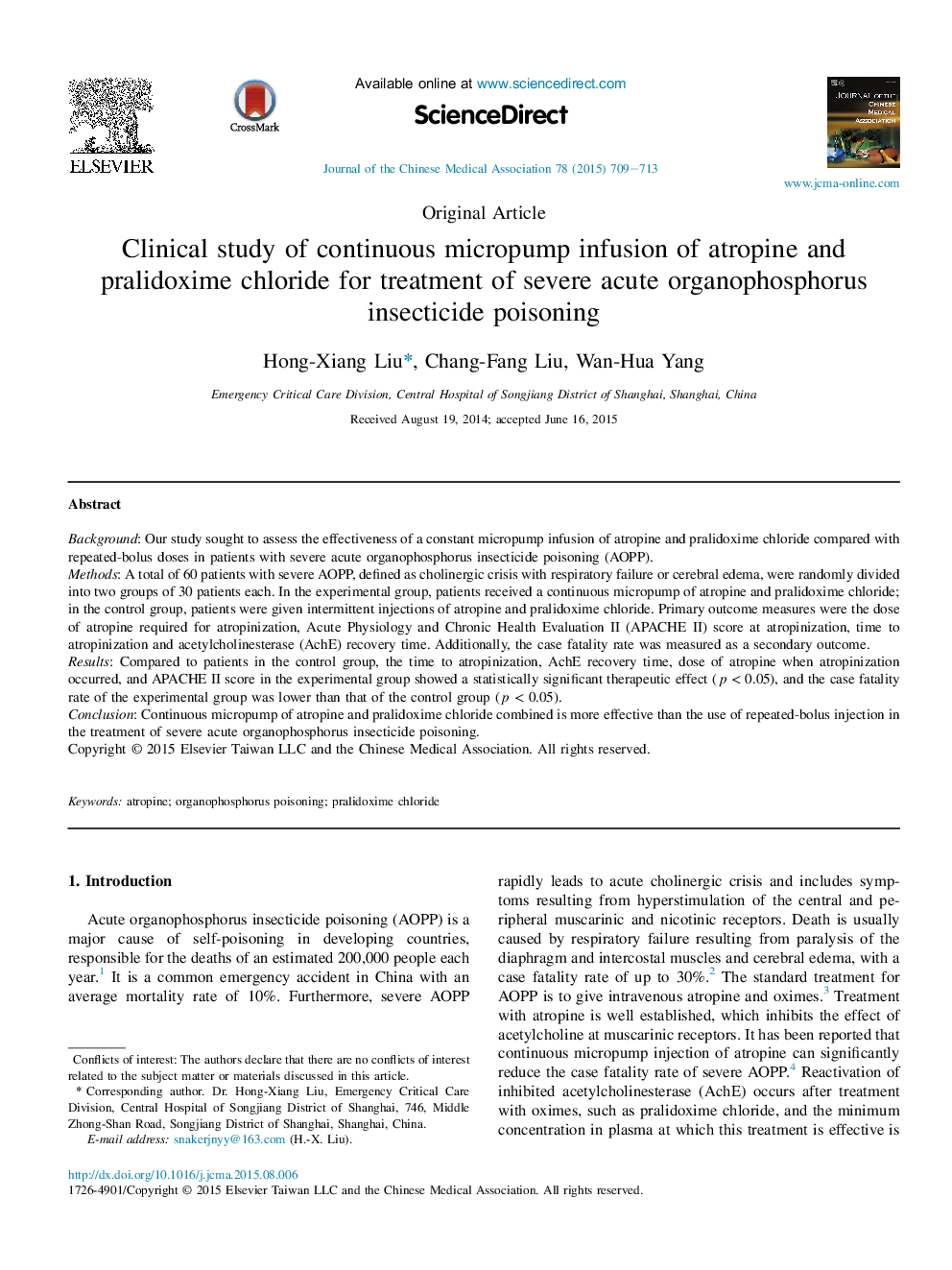| Article ID | Journal | Published Year | Pages | File Type |
|---|---|---|---|---|
| 6151849 | Journal of the Chinese Medical Association | 2015 | 5 Pages |
BackgroundOur study sought to assess the effectiveness of a constant micropump infusion of atropine and pralidoxime chloride compared with repeated-bolus doses in patients with severe acute organophosphorus insecticide poisoning (AOPP).MethodsA total of 60 patients with severe AOPP, defined as cholinergic crisis with respiratory failure or cerebral edema, were randomly divided into two groups of 30 patients each. In the experimental group, patients received a continuous micropump of atropine and pralidoxime chloride; in the control group, patients were given intermittent injections of atropine and pralidoxime chloride. Primary outcome measures were the dose of atropine required for atropinization, Acute Physiology and Chronic Health Evaluation II (APACHE II) score at atropinization, time to atropinization and acetylcholinesterase (AchE) recovery time. Additionally, the case fatality rate was measured as a secondary outcome.ResultsCompared to patients in the control group, the time to atropinization, AchE recovery time, dose of atropine when atropinization occurred, and APACHE II score in the experimental group showed a statistically significant therapeutic effect (p < 0.05), and the case fatality rate of the experimental group was lower than that of the control group (p < 0.05).ConclusionContinuous micropump of atropine and pralidoxime chloride combined is more effective than the use of repeated-bolus injection in the treatment of severe acute organophosphorus insecticide poisoning.
